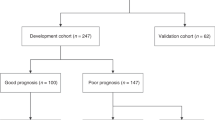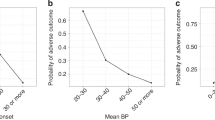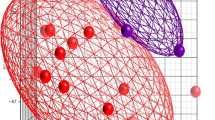Abstract
Mutations of genes involved in the innate immune system have been reported to be associated with an increased sepsis rate in adults. We determined the −159T mutation of the CD14 gene, the 896G mutation of the toll-like receptor 4 gene, the 3020insC mutation of the NOD2 gene (NOD2-3020insC), the IL-6 174G/C promoter polymorphism (IL6-174G/C), and the mannose-binding lectin genotype and their association to the subsequent development of neonatal sepsis in a large cohort of very low birth weight (VLBW) infants. Fifty (14%) of 356 VLBW infants developed blood culture–proven sepsis during their stay in the hospital. VLBW infants carrying the NOD2-3020insC allele (n =15) and the IL6-174G allele (n =121) had a significantly higher rate of blood culture–proven sepsis (33% and 19.8%, respectively) than VLBW infants without these genotypes (p = 0.046 and 0.035, respectively). In a multivariate logistic regression analysis, gestational age less than 28 wk (odds ratio, 3.2; 95% confidence interval, 1.7–6.0; p < 0.001) and the homozygous IL6-174G allele (odds ratio, 1.9; 95% confidence interval, 1.0–3.9; p = 0.039) were predictive for the development of sepsis, whereas the NOD2-3020insC allele was only of borderline significance (odds ratio, 3.2; 95% confidence interval, 1.0–10.4; p = 0.052). VLBW infants with repeated episodes of sepsis had higher frequencies of the NOD2-3020insC and IL6-174G allele. The increased sepsis rate of homozygous IL6-174G carriers was especially related to an increase in Gram-positive infections, and was not observed in VLBW infants who received prophylaxis with teicoplanin (frequency of Gram-positive sepsis in homozygous IL6-174G carriers without prophylaxis 16.5%versus 2.4% in homozygous IL6-174G carriers with prophylaxis; p = 0.033).
Similar content being viewed by others
Log in or create a free account to read this content
Gain free access to this article, as well as selected content from this journal and more on nature.com
or
Abbreviations
- LPS:
-
lipopolysaccharide
- MBL:
-
mannose-binding lectin
- NF-κB:
-
nuclear-factor kappa B
- TLR:
-
toll-like receptor
- VLBW:
-
very low birth weight
References
Stoll BJ, Hansen N, Fanaroff AA, Wright LL, Carlo WA, Ehrenkranz RA, Lemons JA, Donovan EF, Stark AR, Tyson JE, Oh W, Bauer CR, Korones SB, Shankaran S, Laptook AR, Stevenson DK, Papile LA, Poole WK 2002 Late-onset sepsis in very low birth weight neonates: the experience of the NICHD Neonatal Research Network. Pediatrics 110: 285–291
Stoll BJ, Hansen N, Fanaroff AA, Wright LL, Carlo WA, Ehrenkranz RA, Lemons JA, Donovan EF, Stark AR, Tyson JE, Oh W, Bauer CE, Korones SB, Shankaran S, Laptook AR, Stevenson DK, Papile LA, Poole K 2002 Changes in pathogens causing early-onset-sepsis in very-low-birth-weight infants. N Engl J Med 347: 240–247
Gibot S, Cariou A, Drouet L, Rossignol M, Ripoll L 2002 Association between a genomic polymorphism within the CD14 locus and septic shock susceptibility and mortality rate. Crit Care Med 30: 969–973
Arbour NC, Lorenz E, Schutte C, Zabner J, Kline JN, Jones M, Frees K, Watt JL, Schwartz DA 2000 TLR4 mutations are associated with endotoxin hyporesponsiveness in humans. Nat Genet 25: 187–191
Lorenz E, Mira JP, Frees KL, Schwartz DA 2002 Relevance of mutations in the TLR4 receptor in patients with Gram-negative septic shock. Arch Intern Med 162: 1028–1032
Ogura Y, Bonen DK, Inohara N, Nicolae DL, Chen FF, Ramos R, Britton H, Moran T, Karaliuskas R, Duerr RH, Achkar JP, Brant SR, Bayless TM, Kirschner BS, Hanauer SB, Nunez G, Cho JH 2001 A frameshift mutation in NOD2 associated with susceptibility to Crohn's disease. Nature 411: 603–606
Hugot J-P, Chamaillard M, Zouali H, Lesage S, Cézard J-P, Belaiche J, Almer S, Tysk C, O'Morain CA, Gassull M, Binder V, Finkel Y, Cortot A, Modigliani R, Laurent-Puig P, Gower-Rousseau C, Macry J, Colombel JF, Shabatou M, Thomas G 2001 Association of NOD2 leucine-rich repeat variants with susceptibility to Crohn's disease. Nature 411: 599–603
Hampe J, Cuthbert A, Croucher PJP, Mirza MM, Mascheretti S, Fisher S, Frenzel H, King K, Hasselmeyer A, MacPherson AJS, Bridger S, Van Deventer S, Forbes A, Nikolaus S, Lennard-Jones JE, Foelsch UR, Krawczak M, Lewis C, Schreiber S, Mathew CG 2001 Association between insertion mutation in NOD2 gene and Crohn's disease in German and British populations. Lancet 357: 1925–1928
Kilpinen S, Hulkkonen J, Wang XY, Hurme M 2001 The promoter polymorphism of the interleukin-6 gene regulates interleukin-6 production in neonates but not in adults. Eur Cytokine Netw 12: 62–68
Mullinghan CG, Heatley S, Doherty K, Szabo F, Grigg A, Hughes TP, Schwarer AP, Szer J, Tait BD, To LB, Bardy PG 2002 Mannose-binding lectin gene polymorphisms are associated with major infection following allogeneic hemopoietic stem cell transplantation. Blood 99: 3524–3529
Baldini M, Lohman IC, Halonen M, Erickson RP, Holt PG, Martinez FD 1999 A polymorphism in the 5′ flanking region of the CD14 gene is associated with circulating soluble CD14 levels and with total serum immunoglobulin E. Am J Respir Cell Mol Biol 20: 976–983
Fishman D, Faulds G, Jeffery R, Mohammed-Ali V, Yudkin JS, Humphries S, Woo P 1998 The effect of novel polymorphisms in the interleukin-6 (IL-6) gene on IL-6 transcription and plasma IL-6 levels, and an association with systemic-onset juvenile chronic arthritis. J Clin Invest 102: 1369–1376
Madsen HO, Garred P, Thiel S, Kurtzhals JAL, Lamm LU, Ryder LP, Svejgaard A 1995 Interplay between promoter and structural gene variants control basal serum level of mannan-binding protein. J Immunol 155: 3013–3020
Unkelbach K, Gardemann A, Kostrzewa M, Philipp M, Tillmanns H, Haberbosch W 1999 A new promoter polymorphism in the gene of lipopolysaccharide receptor CD14 is associated with expired myocardial infarction in patients with low atherosclerotic risk profile. Arterioscler Thromb Vasc Biol 19: 932–938
Roy S, Knox K, Segal S, Griffiths D, Moore CE, Welsh KI, Smarason A, Day NP, McPheat WL, Crook DW, Hill AVS, Oxford Pneumococcal Surveillance Group 2002 MBL genotype and risk of invasive pneumococcal disease: a case-control study. Lancet 359: 1569–1573
Möller JC, Nelskamp I, Jensen R, Reiss I, Kohl M, Gatermann S, Iven H, Gortner L 1997 Comparison of vancomycin and teicoplanin for prophylaxis of sepsis with coagulase negative staphylococci in very low birth weight infants. J Perinat Med 25: 361–367
Inohara N, Ogura Y, Chen FF, Muto A, Nuñez G 2001 Human Nod1 confers responsiveness to bacterial lipopolysaccharides. J Biol Chem 276: 2551–2554
Schluter B, Raufhake C, Erren M, Schotte H, Kipp F, Rust S, Van SH, Assmann G, Berendes E 2002 Effect of the interleukin-6 promoter polymorphism (−174 G/C) on the incidence and outcome of sepsis. Crit Care Med 30: 32–37
Margaglione M, Bossone A, Cappucci G, Colaizzo D, Grandone E, Di Minno G 2001 The effect of interleukin-6 C/G-174 polymorphism and circulating interleukin-6 on fibrinogen plasma levels. Haematologica 86: 199–204
Heesen M, Bloemeke B, Heussen N, Kunz D 2002 Can the interleukin-6 response to endotoxin be predicted? Studies of the influence of a promoter polymorphism of the interleukin-6 gene, gender, the density of the endotoxin receptor CD14, and inflammatory cytokines. Crit Care Med 30: 664–669
Vickers MA, Green FR, Terry C, Mayosi BM, Julier C, Lathrop M, Ratcliffe PJ, Watkins HC, Keavney B 2002 Genotype at a promoter polymorphism of the interleukin-6 gene is associated with baseline levels of plasma C-reactive protein. Cardiovasc Res 53: 1029–1034
Acknowledgements
The authors thank Anja Sewe, Lynn Ellenberg and Sabine Ziesenitz for excellent laboratory assistance, Birgit Roenspiess for skillful data collection, all doctors and nurses of the participating hospitals, and especially all infants and their parents for their support.
Author information
Authors and Affiliations
Consortia
Corresponding author
Additional information
Supported by the Deutsche Forschungsgemeinschaft, grant-no. Go 955/1-1.
APPENDIX
APPENDIX
Other investigators of the Genetic Factors in Neonatology Study Group: K. Albrecht (Bremen); R. Jensen (Heide); A. Schwabe (Oldenburg); A. Leonhardt, M. Raab (Marburg); A. Warnecke (Osnabrück); and A. v.d.Wense (Hamburg).
Rights and permissions
About this article
Cite this article
Ahrens, P., Kattner, E., Köhler, B. et al. Mutations of Genes Involved in the Innate Immune System as Predictors of Sepsis in Very Low Birth Weight Infants. Pediatr Res 55, 652–656 (2004). https://doi.org/10.1203/01.PDR.0000112100.61253.85
Received:
Accepted:
Issue date:
DOI: https://doi.org/10.1203/01.PDR.0000112100.61253.85
This article is cited by
-
Association between innate immunity gene polymorphisms and neonatal sepsis development: a systematic review and meta-analysis
World Journal of Pediatrics (2022)
-
The association between interleukin-6 gene -174G/C single nucleotide polymorphism and sepsis: an updated meta-analysis with trial sequential analysis
BMC Medical Genetics (2019)
-
Early Prediction of Sepsis Incidence in Critically Ill Patients Using Specific Genetic Polymorphisms
Biochemical Genetics (2017)
-
Genetic Polymorphisms and Bacterial Infections in Neonates
BioNanoScience (2017)
-
The relationship between toll like receptor 4 gene rs4986790 and rs4986791 polymorphisms and sepsis susceptibility: A meta-analysis
Scientific Reports (2016)



